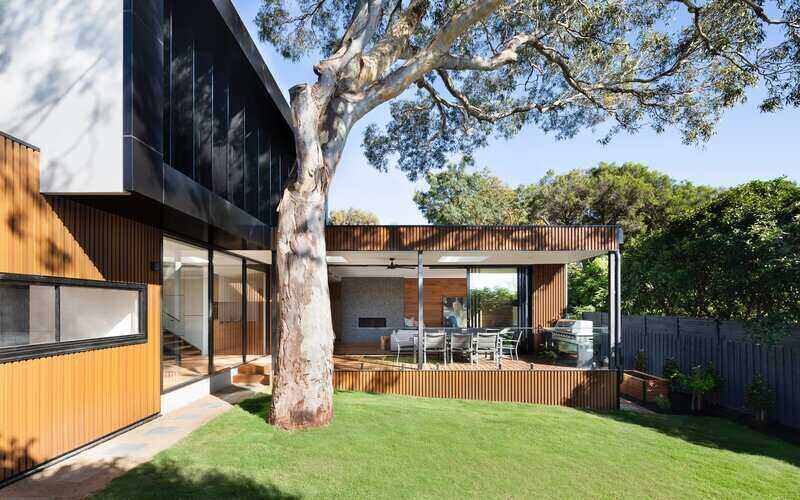Curiously, negative gearing is not a term found in tax terminology but is commonly used to describe a situation where you borrow money to buy an asset and the expenses of owning it (including your interest payments) are more than the income you receive from it.
It applies to all asset types but is arguably most controversial in the context of housing where property investors can effectively reduce their tax bills by offsetting their losses against their taxable income.
Brief history of negative gearing in Australia
Allowing investors to claim tax concessions on their losses was a policy introduced in Australia in 1936, during The Great Depression, in a bid to encourage private investment in the country’s undersupplied housing stock. It remained in place throughout the post-war years when housing in Australia remained in short supply.
Over the ensuing years, negative gearing has been the subject of ongoing debate over its impact on housing affordability and its role in pitting home buyers against investors. It led the Hawke/Keating government to wind negative gearing back in 1985 by not allowing rental property losses to reduce tax on other sources of income. Interest and other expenses could only be offset against rental income.
But in the two years after negative gearing was abolished, a shortage of housing and escalating rents in some Australian cities - not all - saw negative gearing reinstated to its original form in 1987. At the time, then-Treasurer Paul Keating suggested the abolition of negative gearing in 1985 had led investors to leave the rental market.
That brief experiment hasn’t stopped negative gearing again coming under the spotlight by subsequent political players. Labor took the policy to abolish it to the 2016 and 2019 federal elections but lost both. It should come as no surprise it is back on the agenda during the current housing crisis.
What would happen if negative gearing got axed?
Many economists say abolishing negative gearing is not the magic bullet in solving housing affordability as some pundits espouse. The vast majority say there needs to be a broad re-think of the entire taxation framework, not just one aspect of it, and that the main cause of the current housing affordability crisis is lack of supply, a far more complex issue.
We asked a range of experts and property industry figures would happen if negative gearing tax concessions were to be scrapped.
Short-term ‘fix’
AMP chief economist Shane Oliver told Savings.com.au if negative gearing was to be axed, its impact on housing affordability would likely be only short-term.
“There would be an initial retreat from the market from investors at the margin. Depending on how it's applied, that will result in lower prices for a period.
“I suspect you might be looking at something like a 3-4% fall in prices which may then tempt some to declare victory. The problem is that I think that will be a short-lived benefit because having less investors in the market will mean a lower supply of rental property over time which will mean higher rents.”
Mr Oliver said this would eventually flow on to higher prices across the market as renters looked to buy and ex-investment properties were purchased by owner occupiers, with less incentive for investors to contribute to new housing stock.
“The short-term benefit could last a year or so but longer term, there would be higher prices because of less investor participation in the property market in terms of the supply of apartments and other housing. Investors play a key role in helping projects get off the ground.”
Mr Oliver said removing incentives for investors would ultimately decrease housing supply, the main driver of current housing affordability issues.
Impact on housing supply
Acting CEO of property industry company LocalAgentFinder Suresh Raghavan told The Savings Tip Jar podcast winding back negative gearing could have impacts on where investors want to place their money.
“One of the big benefits of negative gearing is that you take a loss, [but] you benefit a little bit from the deduction you make. But over the line, what many investors are hoping for is a capital gain from that property.
“If not as much money is flowing into property because there’s not as much benefit from the tax deductions, there can be impacts on housing supply, there can be impacts on prices, there can be impacts on rental supply and prices, and all of those could indirectly impact an owner occupier as well.”
Mr Raghavan said there are currently 1.3 million Australians claiming a loss on their investment properties. That’s 62% of all investment properties owned in Australia, according to the latest data from the Australian Taxation Office.
“There’s a significant number of these properties that are out there and I think that's what potentially makes it controversial. It's a pretty big part of the investment landscape. And when we talk about investors, it's not necessarily this little niche group of people, it's everyone.
“A lot of people that you see at a barbecue, friends and family, will be investors, and because it touches such a large swathe of the population, I think that's what has created some of this controversy and some of the strong opinions.”
Listen to the full podcast with Suresh Raghavan speaking about negative gearing:
A look into the crystal ball
Spectrum Financial Solutions principal Reid Swift said if axing negative gearing were to work, it would need to be ‘grandfathered’ so as not to affect existing investors and be the most “politically palatable”.
“Short term, there will be a downward pressure on house prices due to the reduced demand for property,” he said.
“This would be offset to a degree by a mini rush of property investors looking to secure a negatively geared property before the change.
“Longer term, I don’t expect negative gearing changes to have much of an impact on the property market.
“Market forces will prevail as supply meets demand. The banks’ credit policies and general housing affordability are far more influential long-term factors on the market.
“It must be remembered also that around two-thirds of property sales are to owner occupiers who won’t be affected by these changes.”
Mr Swift also said rents would rise due to upward pressure, and investors will hold onto properties for longer, causing a lower property turnover rate.
“Investors will always seek safe-haven investments, like bricks and mortar, to include in their long-term diversified portfolios,” he said.
Increased rent argument ‘debunked’
However, CEO of the Tenants Union of NSW Leo Patterson Ross likens the commonly held belief among tenants that negative gearing helps keep rents lower is like Stockholm syndrome, as outlined in this blog post.
“Claims of [scrapping] negative gearing increasing rents during the 80s have been well and truly debunked over the years and bear no relation to the reality of what happened,” he told Savings.com.au.
It’s worth noting here the abolition of negative gearing between 1985 and 1987 saw rents increase in Sydney and Perth but decrease in other major cities, as illustrated below:
A federal submission to federal cabinet at the time said the evidence suggested local influence rather than tax measures had the greatest effect on metropolitan rental markets.
But Mr Patterson Ross said negative gearing has far wider reaching effects.
“Negative gearing, by encouraging speculation and [landlords] taking on excessive debts, likely contributes to a decrease in [the availability of] lower rents and also decreases the political will to spend money on genuinely affordable housing.”
The Tenants Union says investors tend to look for properties with a strong prospect of capital gain, leading many to purchase relatively low-value, low-rent properties that they eventually put back on the market to turn a profit.
It argues as such properties are bought and sold, they eventually drop out of the rental sector and become scarcer, leading to more expensive prices at the lower end of the market.
As well, the Tenants Union says the committed negative gearist who finds themselves faced with the prospect of making money on their investment property is not likely to cut their revenue to keep posting a loss.
Instead, the Union says, they look to refinance, take on more debt, and buy another property.
See also: Property Investment
Union analysis found the overall number of landlords had increased by 85% over the 15 years to 2017 with a growing proportion of them reporting a net loss. It also found there was a 400% jump in the number of people holding six or more negatively geared rental properties, growing four times faster than those holding just one.
However, Mr Patterson Ross said the blame does not directly lie on negative gearing, rather its indirect effect in promoting the decline of affordable housing supply.
“Australia spends an enormous amount of money on this tax-delivered income support and, apart from the property owners who benefit directly or indirectly, we get little in exchange,” he said.
“[It is] worth noting also there are no requirements that negatively geared properties are of a good standard or that recipients follow good or even legal practice in their provision of housing.”
Who wears the cost of negative gearing?
Federal Treasury estimates showed rental property deductions were forecast to leap to $27.1 billion for the 2023-24 financial year, up 58% on the 2020-21 figure of $17.1 billion.
Rental property deductions cover expenses associated with “maintaining and financing property interests”, including interest and capital works expenses.
The inflated figure reflects the jump in interest rates with the cash rate surging from 0.1% in November 2020 to 4.35% during that three-year period, as well as the inflationary effect on other property-related expenses.
One figure, costed by the Parliamentary Budget Office, projects the fiscal cost of negative gearing will reach $97 billion over the decade to 2034.
As at October 2024, the ATO’s most recent data covers the 2020-21 financial year. In that year, around 2.25 million individual taxpayers (21% of all individual taxpayers) claimed deductions against rental income on a total of 3.25 million properties in Australia.
Of these, 47% negatively geared their properties, claiming a net rental loss. This is equivalent to just under 10% of all taxpayers.
In its latest submission on investor tax concessions in October 2024, the Australia Institute estimated negative gearing and the capital gains tax discount cost the federal budget around $20 billion per year.
Negative gearing and home ownership in Australia
There has been much research into what role negative gearing may have played in declining home ownership rates in Australia.
The last census in 2021 found 67% of Australians were homeowners (32% without a mortgage and 35% with a mortgage) while 31% of the population were renters (26% from private landlords).
Overall, the home ownership rate had declined from 70% in 2006, a 3% drop.
See also: By the numbers: Australian home ownership and tenancy
However, the ownership rate among different age groups and income levels has varied markedly over that time.
Home ownership among 25-34-year-olds had dropped 14% in the 50 years to 2021, according to the Australian Institute of Health and Welfare analysis of census figures.
Public policy thinktank Grattan Institute found the bottom fifth of the income scale in this age bracket have seen home ownership rates decrease from 63% to 23% as at the 2016 census.
What alarmed researchers was that data from the 2021 census also showed accelerating falls in home ownership among older and middle-income households over the previous five-year period.
While the Institute’s latest modelling suggested capping tax breaks for property investors would have minimal effect on home prices, it said it would help raise the rate of home ownership.
Separate modelling by NSW Treasury economists predicted reforms could raise the rate of home ownership by three percentage points, from 67% to 70% over the long term.
Grattan Institute’s Brendan Coates said possible changes to tax concessions for investors would help more renters to become homeowners. In practical terms, he argued it would effectively see first homeowners bidding against fewer investors at auctions.
Do other countries have negative gearing?
A number of other developed economies have some form of negative gearing in their taxation regimes, although all have slightly different variations.
Canada, Germany, Japan, and Norway have similar negative gearing rules to Australia although differences between the housing markets and other variables make comparisons difficult.
In Finland, France, and the US, rental losses can only be offset against future rental income while homeowners in the US are also entitled to claim a tax deduction for the interest payments on mortgages on their own homes.
The New Zealand experience
New Zealand abolished its version of negative gearing (albeit not as generous as Australia’s tax concessions) in 2021 on existing properties, but did not apply the change to new builds.
However, negative gearing is to be reinstated in New Zealand in 2025.
Experts say it’s difficult to attribute changes in the country’s housing market to any one policy when the dominant force in the market at the time was likely rising interest rates.
However, overall, there was a decline in investors in the housing market as well as an uptick in first homebuyers.
But rents also increased substantially in New Zealand during that period although, again, there were other factors at play, including - like Australia - a migration boom.
Negative gearing on existing properties with full deductibility of interest expenses (against rental income only) will be reintroduced in New Zealand in April 2025.
It’s also worth noting New Zealand doesn’t have comprehensive capital gains tax.
Savings.com.au’s two cents
Depending on what side of the fence you fall on - investor or would-be first home buyer - negative gearing can be seen as a boon or a curse.
Potential home affordability solutions that have a reasonable chance of appeasing both sides include having a progressive approach to reduced investor tax deductions ushered in through a ‘grandfathering’ policy and lowering, or axing, state and territory government stamp duty.
Once you’re established in the property market, negative gearing can sound like an incentive to purchase another home for investment purposes. However, many experts - including critics of negative gearing - say it’s generally better to positively gear your property if you can.
Indeed, one recent study found changes to tax brackets and marginal tax rates meant 60% of property investors would be financially better off if they put their money into a superannuation fund instead.
But Australia’s love affair with property may prove difficult to dislodge.
For first home buyers, it’s easy to blame negative gearing as the sole reason for Australia's home affordability issues. Yet many experts and analysts, from all sides of the political spectrum, acknowledge housing shortages and affordability issues stem from a more complex web of issues.
In the end, axing any type of preferential tax treatment that a large voter base has enjoyed for a long period is always going to be difficult and controversial. So far, proposals to dismantle negative gearing have not met with success at the ballot box, so it will be a bold government move to do it regardless.
Original article written by Harrison Astbury in August 2020. Updated by Denise Raward on 14 October 2024.
Photo by Steve Doig on Unsplash
Disclaimers
The entire market was not considered in selecting the above products. Rather, a cut-down portion of the market has been considered. Some providers' products may not be available in all states. To be considered, the product and rate must be clearly published on the product provider's web site. Savings.com.au, yourmortgage.com.au, yourinvestmentpropertymag.com.au, and Performance Drive are part of the Savings Media group. In the interests of full disclosure, the Savings Media Group are associated with the Firstmac Group. To read about how Savings Media Group manages potential conflicts of interest, along with how we get paid, please click through onto the web site links.

Ready, Set, Buy!
Learn everything you need to know about buying property – from choosing the right property and home loan, to the purchasing process, tips to save money and more!
With bonus Q&A sheet and Crossword!




 Harry O'Sullivan
Harry O'Sullivan

 Denise Raward
Denise Raward
 Alex Brewster
Alex Brewster
 Rachel Horan
Rachel Horan

